10 Perennial Foods: Plant Once and Enjoy Forever!
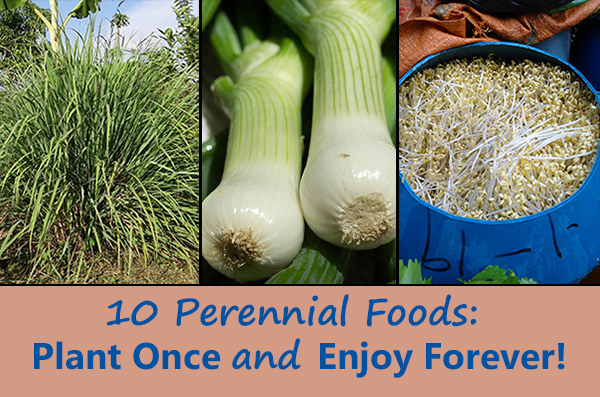
Maybe you have a thriving garden but just want to add more so that you can reduce trips to the grocery store. Maybe you are curious to test your green thumb. Perhaps you just need a few trusty ingredients on hand at all times! There are so many reasons to start regrowing handy plants, and the great news is that it’s often very simple and completely free to do! Most of the time, all you need is some scraps, some water, and some sun.
Get your garden going, your kitchen healthy, and your pocketbook full with these great regrowing foods!
1. Romaine Lettuce, Celery, and Bok Choy
Get some extra greens going in your kitchen by recycling produce you already have. Once you’ve enjoyed your healthy veggie, simply take the white root and remove any stalks which are over about 3 centimeters in height. Place the white root in a shallow bit of water, leaving the greens facing up. Place the container in a well-lit window and spritz with water to keep the greens moist as they grow. After about a week and a half, plant the roots, letting the leaves peak up above ground. In several weeks, you can harvest and enjoy the spoils!
2. Bean Sprouts
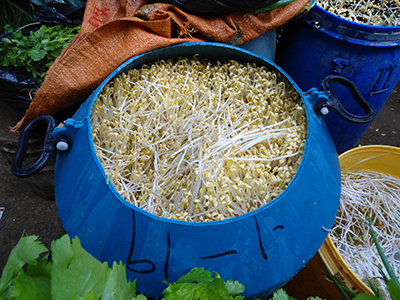
Are you constantly buying packs of bean sprouts only to find them limp and slimy just as you open up the package? It’s a common problem, but not for long once you start growing your own sprouts. All you need is a tablespoon of beans, some water, and some patience. Soak the beans in a jar with a thin layer of water on the bottom. Set this overnight and in the morning you can drain the water, replace the beans in the container, and cover with a towel. Repeat the whole process until the sprouts are as large as you desire.
3. Garlic Sprouts

Garlic is one of those ingredients that taste wonderful in nearly every dish. Always have a plentiful supply ready with this simple hack—all you need is one clove! Simply take a single clove (the bigger the better) and plant it roots-down in your potting soil. The depth of planting should be about twice the length of the clove. Make sure the soil is in direct sun and in warm conditions. Water regularly and once the leaves start drying, it is time to harvest and enjoy your garlic!
4. Lemongrass
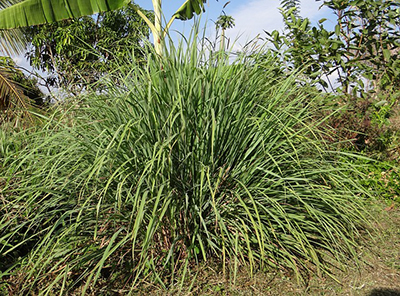
Lemongrass makes a great addition to Asian soups and has a lot of delicious uses around the kitchen. It can also be a tricky item to find at the grocery store, so once you get your hands on some, you want to be sure to recycle and regrow. Simply place a leftover root in a glass jar. Pour enough water in the jar to cover the root completely and leave in the sunlight. After a week, you’ll notice new growths, and at this point, you’re free to plant your very own lemongrass in a pot or herb garden.
5. Spring Onions
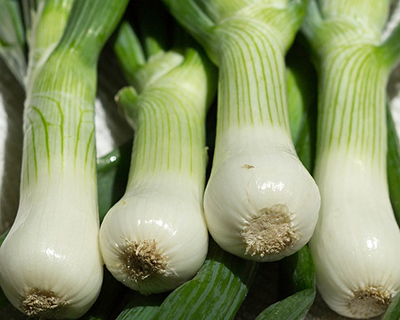
For onions, leeks, scallions, and fennel, skip the stores and start growing your own! If you have leftover scraps from any of these plants in your kitchen, take the white roots and place in a container with just a little bit of water—just enough to wet the roots. Place the container in the sun, and after a few days, sprouts will appear. Refresh the water as needed and allow these sprouts to grow until you need them for your next meal. Just remember to put the
roots back in the water for regrowth!
6. Avocado
 This one takes a bit of engineering, but your own source of avocados? Sounds like a dream! Pinch yourself and get started by getting some toothpicks, an avocado seed, and a bowl or jar of water ready. Wash the seed and then gently poke an end of a toothpick into it until it sticks. Do the same with two more toothpicks so that they will be able to suspend the seed from the top of the jar or bowl of water. The water level should cover the bottom 3 centimeters or so of the seed. Keep the container in direct sunlight and check the water level everyday to keep it at the same level. After about six weeks of patience, a stem and roots will appear. Once the stem grows to about 15 centimeters, trim it down to 8. As you see the leaves start to sprout, plant the seed in soil, leaving about half of it peaking out of the ground. You now have yourself an avocado plant!
This one takes a bit of engineering, but your own source of avocados? Sounds like a dream! Pinch yourself and get started by getting some toothpicks, an avocado seed, and a bowl or jar of water ready. Wash the seed and then gently poke an end of a toothpick into it until it sticks. Do the same with two more toothpicks so that they will be able to suspend the seed from the top of the jar or bowl of water. The water level should cover the bottom 3 centimeters or so of the seed. Keep the container in direct sunlight and check the water level everyday to keep it at the same level. After about six weeks of patience, a stem and roots will appear. Once the stem grows to about 15 centimeters, trim it down to 8. As you see the leaves start to sprout, plant the seed in soil, leaving about half of it peaking out of the ground. You now have yourself an avocado plant!
7. Potatoes
 Potatoes are a wonderful food source for the thrift and eco-savvy. To make new potatoes out of your old scraps, take the ones that have eyes on them and dry them out overnight. Next, you can plant them about 10 centimeters deep in the soil, making sure that the eyes face up. After a few weeks, you’ll notice sprouting potato plants.
Potatoes are a wonderful food source for the thrift and eco-savvy. To make new potatoes out of your old scraps, take the ones that have eyes on them and dry them out overnight. Next, you can plant them about 10 centimeters deep in the soil, making sure that the eyes face up. After a few weeks, you’ll notice sprouting potato plants.
8. Sweet Potatoes

Sweet potatoes are another great and ever-giving nutrition source. Cut a sweet potato in half and suspend with toothpicks over shallow water. After a few days, sprouts and tiny roots will appear. When the sprouts reach to 10 centimeters, gently twist them off the potato and soak the ends of the sprouts in a jar of water. When the roots from these sprouts grow to be about 5 centimeters, go ahead and plant in your soil.
9. Ginger
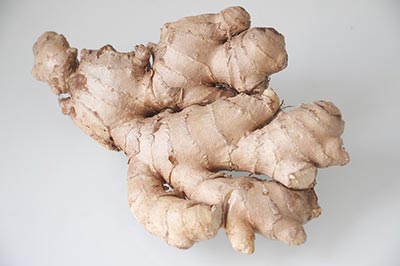 This spicy hack is simple and delicious. Keep your ginger supply up and running simply by planting a spare piece or two of your store-bought ginger root. When you plant, be sure to set the buds facing upwards. In as little as a week, you’ll be greeted by new roots which you can let grow and either put in your next dish, regrow, or both!
This spicy hack is simple and delicious. Keep your ginger supply up and running simply by planting a spare piece or two of your store-bought ginger root. When you plant, be sure to set the buds facing upwards. In as little as a week, you’ll be greeted by new roots which you can let grow and either put in your next dish, regrow, or both!
10.Mushrooms
 Last but not least, mushrooms are a wonderful and ambitious project. You need a warm space with lots of humidity and soil nutrients. Cut off the head of the mushroom and enjoy, then take the stem and plant in the soil. Make sure to leave just the very top of the stem exposed, and with a little luck, you’ll be growing your own mushrooms!
Last but not least, mushrooms are a wonderful and ambitious project. You need a warm space with lots of humidity and soil nutrients. Cut off the head of the mushroom and enjoy, then take the stem and plant in the soil. Make sure to leave just the very top of the stem exposed, and with a little luck, you’ll be growing your own mushrooms!
 Home and Gardening Ideas At home and Gardening ideas we believe inspiring readers about homesteading, self sufficiency
Home and Gardening Ideas At home and Gardening ideas we believe inspiring readers about homesteading, self sufficiency

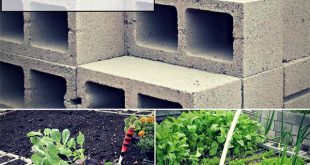




Thanks for the tips